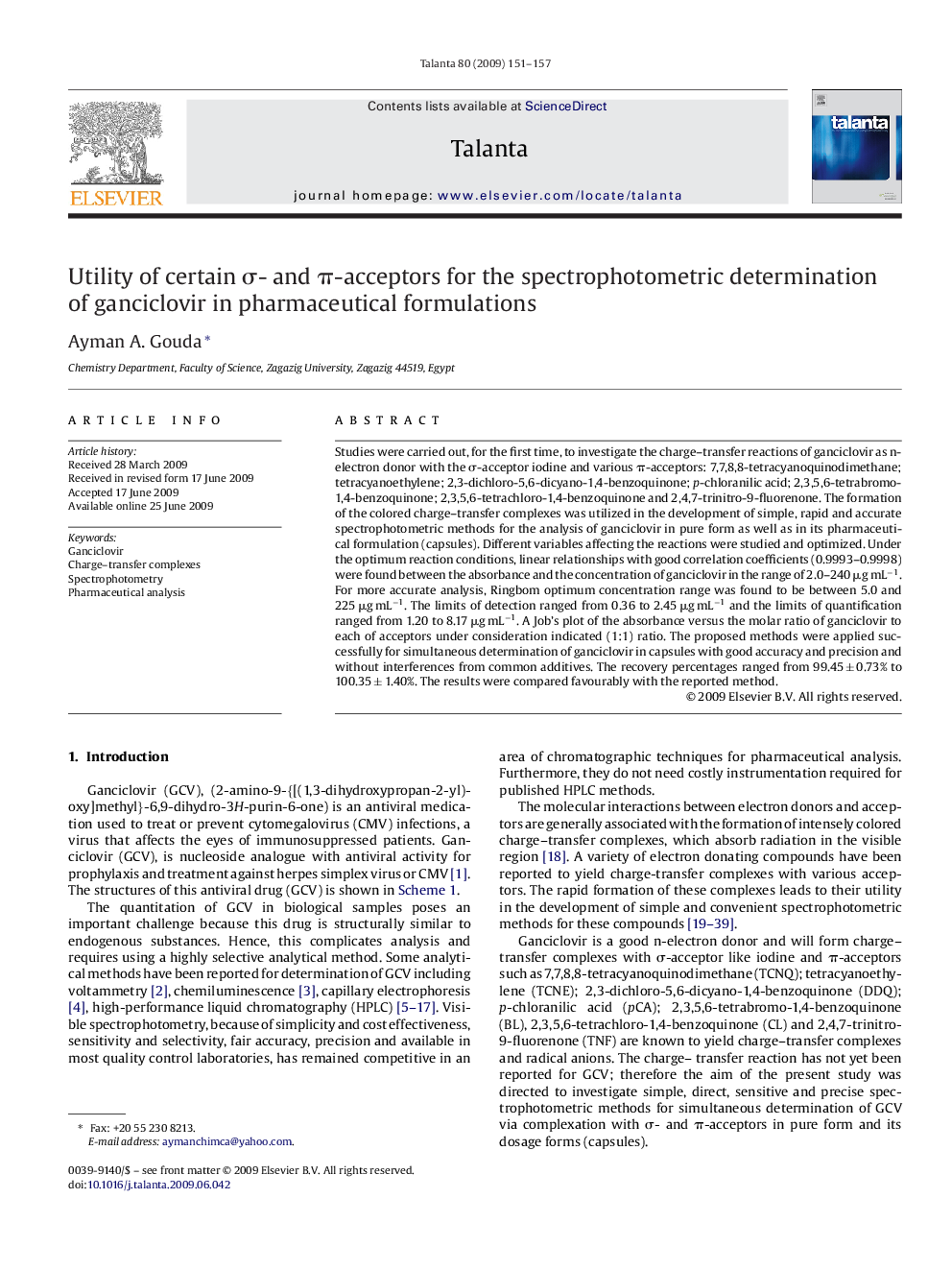| Article ID | Journal | Published Year | Pages | File Type |
|---|---|---|---|---|
| 1243657 | Talanta | 2009 | 7 Pages |
Studies were carried out, for the first time, to investigate the charge–transfer reactions of ganciclovir as n-electron donor with the σ-acceptor iodine and various π-acceptors: 7,7,8,8-tetracyanoquinodimethane; tetracyanoethylene; 2,3-dichloro-5,6-dicyano-1,4-benzoquinone; p-chloranilic acid; 2,3,5,6-tetrabromo-1,4-benzoquinone; 2,3,5,6-tetrachloro-1,4-benzoquinone and 2,4,7-trinitro-9-fluorenone. The formation of the colored charge–transfer complexes was utilized in the development of simple, rapid and accurate spectrophotometric methods for the analysis of ganciclovir in pure form as well as in its pharmaceutical formulation (capsules). Different variables affecting the reactions were studied and optimized. Under the optimum reaction conditions, linear relationships with good correlation coefficients (0.9993–0.9998) were found between the absorbance and the concentration of ganciclovir in the range of 2.0–240 μg mL−1. For more accurate analysis, Ringbom optimum concentration range was found to be between 5.0 and 225 μg mL−1. The limits of detection ranged from 0.36 to 2.45 μg mL−1 and the limits of quantification ranged from 1.20 to 8.17 μg mL−1. A Job's plot of the absorbance versus the molar ratio of ganciclovir to each of acceptors under consideration indicated (1:1) ratio. The proposed methods were applied successfully for simultaneous determination of ganciclovir in capsules with good accuracy and precision and without interferences from common additives. The recovery percentages ranged from 99.45 ± 0.73% to 100.35 ± 1.40%. The results were compared favourably with the reported method.
